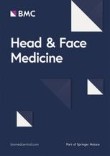"Shh-don't say the Q-word" or do you?
Br J Oral Maxillofac Surg. 2020 Aug 20;:
Authors: Singh Dubb S, Ferro A, Fowell C
Abstract
We aimed to assess the superstitious belief that saying the word 'quiet' during an on-call period in oral and maxillofacial surgery (OMFS) causes a disproportionate increase in workload. A two-armed, single-centre, randomised trial was performed in a single-blinded fashion within the OMFS department at Addenbrookes Hospital, Cambridge. Duty on-call OMFS SHOs were assigned to a 'quiet group' or 'non-quiet group'. The former group was actively told that the on-call period would be 'quiet' whilst in all contexts in the latter this word was not used. Data were collected from 8am to 7pm from a period that spanned a total of 40 week-day on calls. The total number of bleeps was 491, the mean (SD) bleep count/day irrespective of treatment was 12.3 (4.6). The mean (SD) bleep count was 11.45 (4.15) for the control group and 13.1 (4.9) for the quiet (treatment) group. Welch's independent-sample t test identified no significant difference in the mean number of bleeps encountered between groups. Moreover, ANOVA identified no significant difference in the mean number of bleeps between days (F(4,35)=0.086, p=0.986). Statistical analysis was performed using R package version 3.6.2 (The R Foundation). Our study refutes the central dogma of all of medicine, which suggests that saying the word 'quiet' increases the clinician's workload during the working day. We identified no significant difference in the number of bleeps between different days of the week. OMFS sees a large breadth of presentations within the head and neck that requires a diverse set of skills to manage the varying presentations when on call.
PMID: 33279295 [PubMed - as supplied by publisher]





